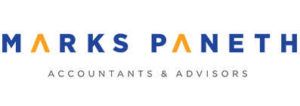Jewelers Should Act Now to Optimize
Employee Retention Credits

There is still time for jewelers (and, by extension, other retailers) to optimize the opportunities available from Employee Retention Credits (ERC), the tax credits designed to encourage businesses to keep workers on their payroll and support small businesses and nonprofits through the coronavirus economic emergency.
Let’s begin by understanding ERC qualifications and stress the importance of consulting with your tax advisor to ensure your filing status for ERC and gather the necessary sales data and payroll figures. Find guidance with examples from the IRS here.
At a recent webinar, given in association with The Plumb Club by Howard Hoff, CPA, Partner, Marks Paneth, and Jay Brower, Partner, State and Local Tax Leader, Marks Paneth, two qualifiers were noted for companies taking advantage of the ERC. (Click here to replay the webinar).
Qualifier #1: Companies can qualify for ERC if their trade or business operations were entirely or partially shut down due to a government order.
The key ideas are:
- A retailer who closed stores but maintained internet sales qualifies under the partially shut down rule.
- Even when reopened, a retailer may qualify if the number of customers or employees inside the store is limited.
- If entire operations were limited due to supply chain disruptions, this qualifies as a partial suspension.
But the tale of mandated shutdowns is about two years and two sets of rules.
First, the ERC for 2020:
- Provides a 50% credit on the first $10,000 paid to each employee during the period(s) that the employer qualifies for the credit.
- The credit is capped at $5,000 per employee for all of 2020.

For example, In March 2020, a jeweler was ordered to shut down for three months but maintained internet sales. For that period, the retailer paid three employees a total of $25,000, none of whom was paid more than $10,000. The retailer is entitled to an ERC of $15,000 (3 employees at $5,000).
For 2021, the ERC:
- Provides a 70% credit on the first $10,000 paid to eligible employees during the period(s) that the employer qualifies for; The credit is capped at $7,000 per employee.
- However, the $10,000 wage base and $7,000 cap reset each quarter of 2021. Therefore, 2021 allows for credits of up to $28,000 per employee compared with $5,000 in 2020.
For example, During Q1 and Q2 of 2021, a retailer’s receipts were down 25% and 20% compared to the same periods in 2019. In Q1, the retailer paid three employees wages of $28,000; in Q2, the wages were $35,000. For Q1, the retailer is entitled to an ERC of $29,600 ($28,000 x .7); for Q2, the retailer is due an ERC of $21,000 (3 employees @ $7,000).
Qualifier #2: Companies that did not shut down can qualify for ERC if they show a significant decline in receipts. Once again, the rules for each year differ.
For 2020, if a jeweler can show at least a 50% decline in revenues compared to the same period in 2019, it continues to be eligible for ERC in 2020 until the quarter following the quarter in which receipts exceeded 80% of the same quarter in 2019. For example, the company had a 60% decline in receipts in Q2 2020 compared to 2019. Its Q3 and Q4 receipts were down 30% and 5%, respectively, compared to 2019. In this case, the company qualifies for ERC for Q2, 3, and 4 of 2020.
For 2021, the business must show at least a 20% decline in revenue in a calendar quarter as compared to the same period in 2019. A special rule provides that if the employer experienced a 20% or more decline in receipts for the immediately preceding quarter, compared to 2019, it qualifies for the current quarter. For example, the retailer has a 22% decline in Q1 of 2021 compared to 2019. It thus allows for ERC for both Q1 and Q2 of 2021.
It is important to remember that if the business meets either the fully or partially shutdown operations test or the decline in revenues test, it qualifies for ERC. The company does not need to complete both tests to qualify.
Several other complexities arise when the ERC interacts with the Payroll Protection Plan (PPP) loan forgiveness. It is essential to analyze both the PPP forgiveness and taking the ERC. You cannot use the same payroll for both, but there are ways to optimize the benefit from both. Therefore, we recommend applying for the ERC after the PPP-covered period so this optimization can occur. This will require filing amended payroll tax and entity tax returns, but the benefit can far outweigh the tax preparation fees. Again, consult with your Marks Paneth advisor on how to maximize your benefits from these government plans.
As is so often the business case, planning is critical. Even if a company was only temporarily affected by a government shutdown, it may still qualify for credits. Calculate 2019, 2020, and 2021 receipts to see if reduction thresholds are met. Review the IRS guidance and then meet with your tax advisor to take advantage of any ERC credits and PPP loan forgiveness you may be due.
Headquartered in New York City, with offices in major markets throughout the East Coast, Marks Paneth is ranked by Accounting Today among the 50 largest accounting firms in the nation and the top 10 in the Mid-Atlantic Region.
For more information about Marks Paneth LLP, please visit www.markspaneth.com and connect with us on LinkedIn, Twitter, and Facebook.
Sign up for our Newsletter

There is still time for jewelers (and, by extension, other retailers) to optimize the opportunities available from Employee Retention Credits (ERC), the tax credits designed to encourage businesses to keep workers on their payroll and support small businesses and nonprofits through the coronavirus economic emergency.
Let’s begin by understanding ERC qualifications and stress the importance of consulting with your tax advisor to ensure your filing status for ERC and gather the necessary sales data and payroll figures. Find guidance with examples from the IRS here.
At a recent webinar, given in association with The Plumb Club by Howard Hoff, CPA, Partner, Marks Paneth, and Jay Brower, Partner, State and Local Tax Leader, Marks Paneth, two qualifiers were noted for companies taking advantage of the ERC. (Click here to replay the webinar).
Qualifier #1: Companies can qualify for ERC if their trade or business operations were entirely or partially shut down due to a government order.
The key ideas are:
- A retailer who closed stores but maintained internet sales qualifies under the partially shut down rule.
- Even when reopened, a retailer may qualify if the number of customers or employees inside the store is limited.
- If entire operations were limited due to supply chain disruptions, this qualifies as a partial suspension.
But the tale of mandated shutdowns is about two years and two sets of rules.
First, the ERC for 2020:
- Provides a 50% credit on the first $10,000 paid to each employee during the period(s) that the employer qualifies for the credit.
- The credit is capped at $5,000 per employee for all of 2020.



For example, In March 2020, a jeweler was ordered to shut down for three months but maintained internet sales. For that period, the retailer paid three employees a total of $25,000, none of whom was paid more than $10,000. The retailer is entitled to an ERC of $15,000 (3 employees at $5,000).
For 2021, the ERC:
- Provides a 70% credit on the first $10,000 paid to eligible employees during the period(s) that the employer qualifies for; The credit is capped at $7,000 per employee.
- However, the $10,000 wage base and $7,000 cap reset each quarter of 2021. Therefore, 2021 allows for credits of up to $28,000 per employee compared with $5,000 in 2020.
For example, During Q1 and Q2 of 2021, a retailer’s receipts were down 25% and 20% compared to the same periods in 2019. In Q1, the retailer paid three employees wages of $28,000; in Q2, the wages were $35,000. For Q1, the retailer is entitled to an ERC of $29,600 ($28,000 x .7); for Q2, the retailer is due an ERC of $21,000 (3 employees @ $7,000).
Qualifier #2: Companies that did not shut down can qualify for ERC if they show a significant decline in receipts. Once again, the rules for each year differ.
For 2020, if a jeweler can show at least a 50% decline in revenues compared to the same period in 2019, it continues to be eligible for ERC in 2020 until the quarter following the quarter in which receipts exceeded 80% of the same quarter in 2019. For example, the company had a 60% decline in receipts in Q2 2020 compared to 2019. Its Q3 and Q4 receipts were down 30% and 5%, respectively, compared to 2019. In this case, the company qualifies for ERC for Q2, 3, and 4 of 2020.
For 2021, the business must show at least a 20% decline in revenue in a calendar quarter as compared to the same period in 2019. A special rule provides that if the employer experienced a 20% or more decline in receipts for the immediately preceding quarter, compared to 2019, it qualifies for the current quarter. For example, the retailer has a 22% decline in Q1 of 2021 compared to 2019. It thus allows for ERC for both Q1 and Q2 of 2021.
It is important to remember that if the business meets either the fully or partially shutdown operations test or the decline in revenues test, it qualifies for ERC. The company does not need to complete both tests to qualify.
Several other complexities arise when the ERC interacts with the Payroll Protection Plan (PPP) loan forgiveness. It is essential to analyze both the PPP forgiveness and taking the ERC. You cannot use the same payroll for both, but there are ways to optimize the benefit from both. Therefore, we recommend applying for the ERC after the PPP-covered period so this optimization can occur. This will require filing amended payroll tax and entity tax returns, but the benefit can far outweigh the tax preparation fees. Again, consult with your Marks Paneth advisor on how to maximize your benefits from these government plans.
As is so often the business case, planning is critical. Even if a company was only temporarily affected by a government shutdown, it may still qualify for credits. Calculate 2019, 2020, and 2021 receipts to see if reduction thresholds are met. Review the IRS guidance and then meet with your tax advisor to take advantage of any ERC credits and PPP loan forgiveness you may be due.
Leave a Reply
You must be logged in to post a comment.